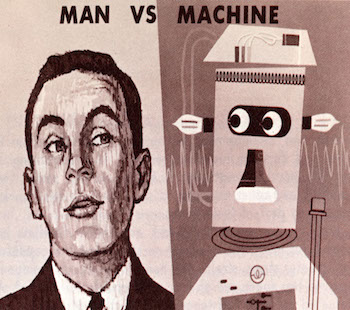It is no surprise that at a time where technology is rapidly changing and advancing, machines are sometimes being used to replace humans to perform certain jobs. Some believe that machines can perform tasks and make decisions more efficiently than humans. The world of healthcare and anesthesia service is not immune to these types of practices.
The idea of using a machine that automates anesthesia is nothing new, and was first discussed as early as the 1950s. However, the technology at the time was not advanced enough and it wasn’t until recent years that these types of anesthesia service machines were actually used for real medical procedures.
A device called Sedasys, which has been developing for fifteen years, is an anesthesia service device being used in the U.S. on healthy patients receiving a colonoscopy or upper endoscopy. This now FDA-approved machine is an open-loop system that can administer the initial dose, which is predetermined by the patient’s weight and age, and reduce or stop drug delivery depending on the patient’s condition. The machine cannot decide alone how much anesthesia the patient needs, and the dosage can only be increased by the doctor or nurse that is monitoring in case of emergencies. This more conservative approach offered comfort to regulators and helped win the approval of the FDA.
While Sedasys is very innovative, there is a new anesthesia service machine in town called iControl-RP that is hoping to surpass Sedasys capabilities. This experimental closed-loop machine actually monitors brainwave activity and factors such as blood oxygen levels and makes its own decision on how much anesthesia to deliver. The machine has been used on over 250 patients, including adults and children, undergoing general surgery.
“We are convinced the machine can do better than human anesthesiologists” says Mark Ansermino, co-developer of iControl-RP. He claims that the device would be able to respond to any issues quickly, without hesitation, and make the decisions that are usually made by the doctor. Currently, the anesthesia service device is not FDA approved and is being tested on patients in Vancouver.
The team behind iControl-RP has said they have had a hard time finding corporate backers for the device, and they believe most big companies view the project as quite risky. Risk is a valid concern, and we imagine patients undergoing surgery would have the same apprehension. Would people be quick to board a plane piloted by only a computer? Will patients and physicians feel comfortable relying solely on an anesthesia service machine to administer anesthesia? It seems that the thought of machines taking over completely in any aspect is far off, and it would be very hard to have something like this accepted by everyone.
As the fastest growing Anesthesia Management Solution in the midwest, Steel City Anesthesia offers more than just anesthesia services. We can continue to provide exceptional patient satisfaction and meet anesthesia needs with a personal touch that can not be replaced by a machine.
Sources:
https://www.washingtonpost.com/news/the-switch/wp/2015/05/15/one-anesthesiology-robot-dips-its-toes-into-whats-possible-this-one-jumps-all-in/
http://www.forbes.com/sites/paulhsieh/2015/05/31/would-you-trust-a-computer-to-knock-you-out/2/

